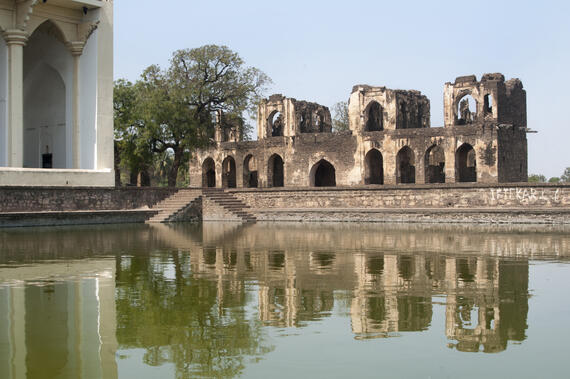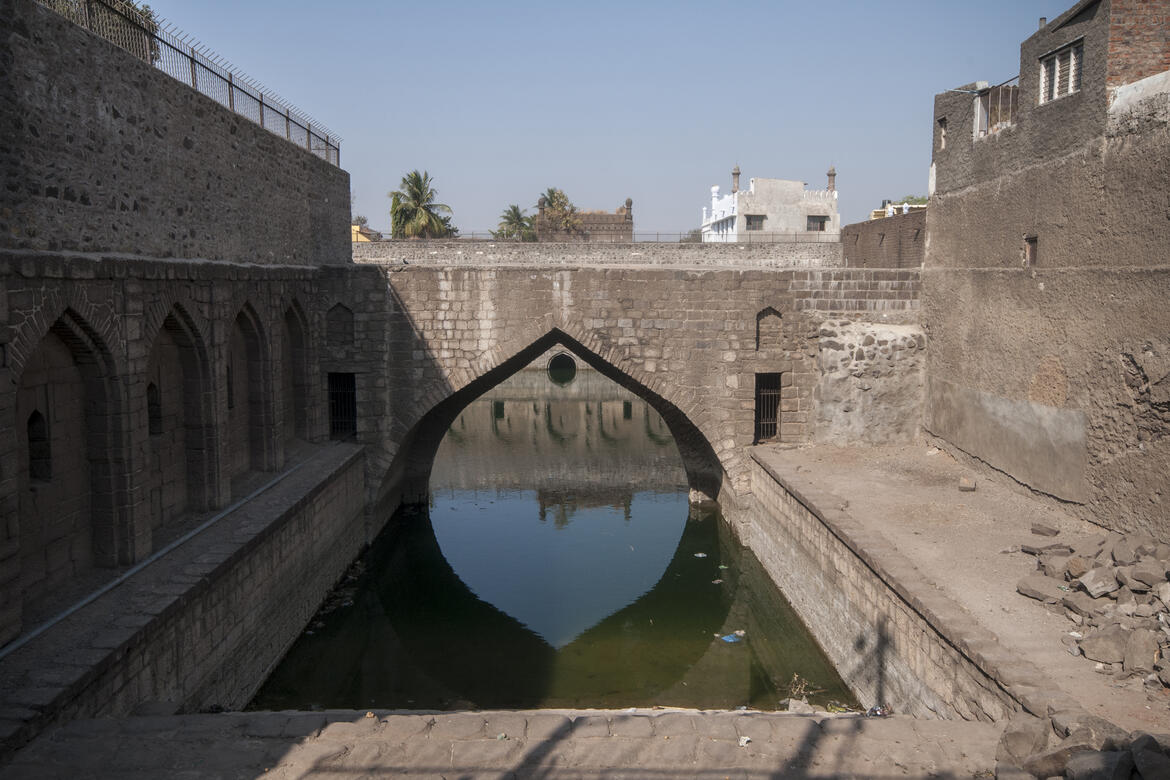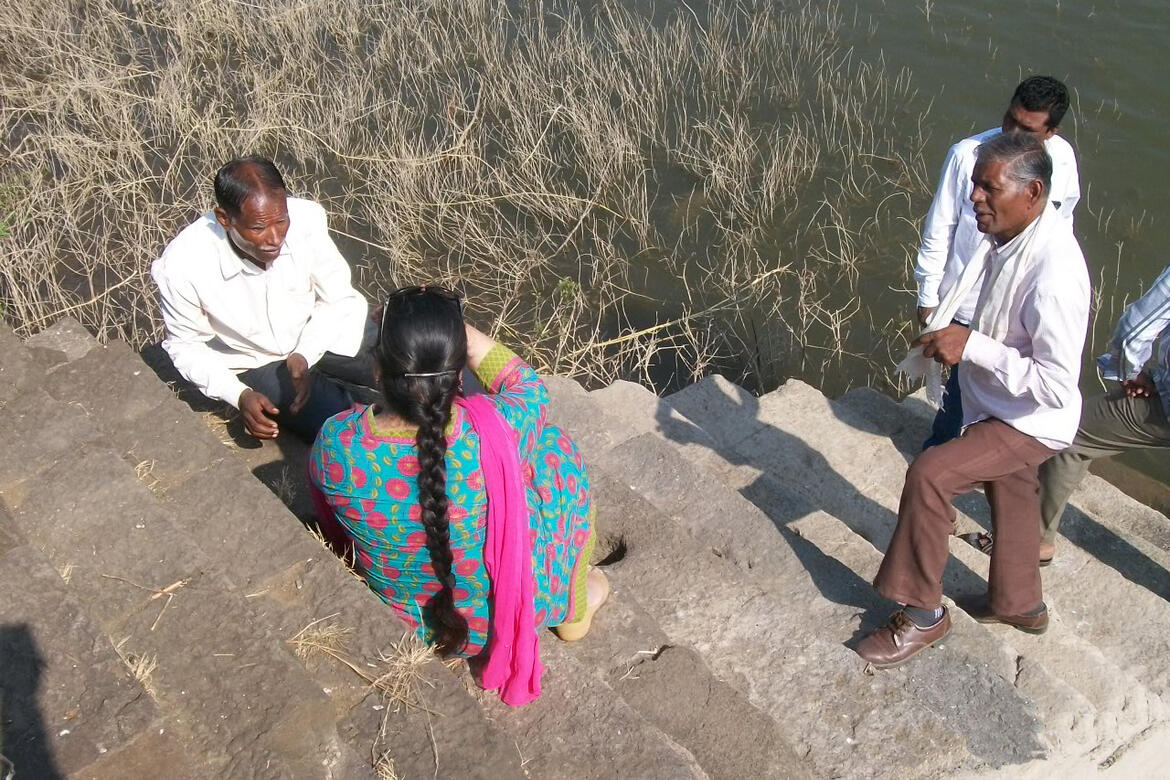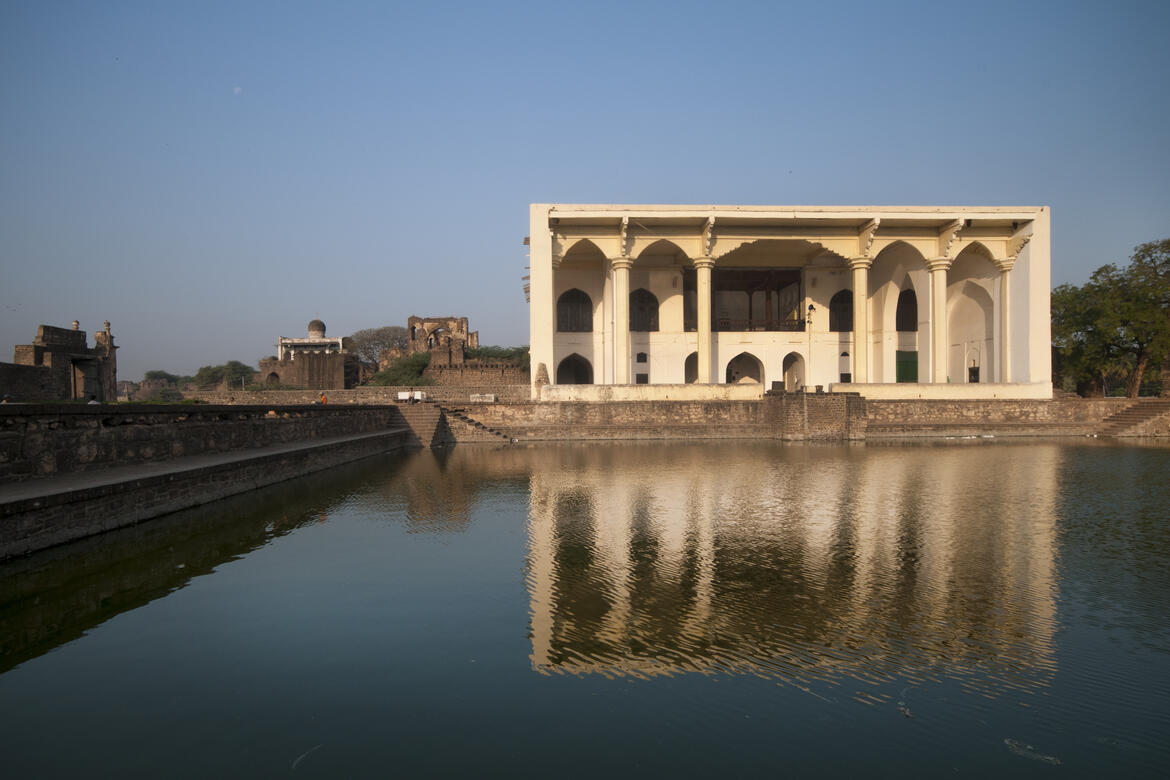From the Magazine: Historic Water Systems of the Deccan Plateau

Revitalization of traditional water management systems and the recovery of local knowledge can help address the water crisis for contemporary communities.
Every human society has been shaped by its relationship to water, our most vital resource. Water can be collected, diverted, stored, released, and recycled—in other words, managed—and water management techniques have always been necessary to ensure the availability of water when needed.
For the cultures that flourished on the Indian subcontinent, the imperative to store and manage water arose from the inescapable logic of the seasonal monsoon, which delivers more than three quarters of India’s total annual rainfall over a period of several months. The rich climatic and geological diversity of the subcontinent gave rise to a broad array of systems and techniques allowing water to be conserved for the dry season.
The need to ensure adequate water availability for all remains acute today. Two nominations to the 2020 World Monuments Watch for sites on India’s Deccan Plateau illustrate the potential for historic water systems to help contemporary communities meet that need. The high plateau receives comparatively less rainfall from the monsoon, and its rocky landscape retains little moisture, rendering water management essential.
Daulatabad, a historic fort in the Marathwada region of the Deccan, showcases the skill that was required in order to sustain a sizable population behind a fortified settlement. The site, occupying a steep granite peak, was a capital of the Hindu Yadava dynasty that succumbed to the Muslim sultans of Delhi in the fourteenth century. Successive rulers of the Deccan sultanates took advantage of their cultural connections to the broader Islamic world to create elaborate systems of reservoirs, tanks, wells, and channels for the supply of their strongholds. The rulers of Daulatabad created reservoirs by damming the mountain streams in the surrounding catchment area, and built underground networks of stone or terra-cotta pipes to deliver water to the fortified citadel. In the nineteenth century, 16 reservoirs were identified in the Aurangabad district, of which half were then still operational. The Tughlaq-era Mavsala reservoir, still in use today, is but one example of this remarkable system.
If water cannot be collected from the surface, groundwater provides an alternative source, if it can be harnessed. In much of Asia as well as North Africa this took the form of underground tunnels, known as the karez, qanat, or falaj system. In this ingenious system, a gently sloping underground tunnel allows groundwater from a large area to flow to a single outlet where it can be collected.
A large well is placed at the origin of the tunnel, while narrower vertical shafts, dug for ventilation, help mark its route overground. The karez system was used extensively in the Deccan region, as can be seen in Bijapur and other locations. Like Daulatabad, Bijapur was a Yadava settlement before becoming a city of the Bahmanī sultanate. The karez of Bijapur was the creation of the Ādil Shāhī rulers, who succeeded the Bahmanī state.
But traditional water management systems, like those of medieval Deccani societies, depend on collective responsibility for their maintenance and upkeep. Silt, carried by water, accumulates gradually and its removal is constantly needed, while ventilation shafts and other outlets must be protected from encroachment that can contaminate the water supply. When collective systems fail, private and unregulated extraction takes their place, as is today the case in much of India. This takes the form of pumping groundwater from deeper and deeper aquifers, an inherently unsustainable practice. By contrast, traditional systems limit the supply of water to the natural rate at which it replenishes, making them sustainable in the long run.
India is hardly the only country affected by a looming water crisis, as global water use has been on the rise for several decades.
India is hardly the only country affected by a looming water crisis, as global water use has been on the rise for several decades. The last few years have seen “Day Zero” scenario-planning, and the switching off of municipal water supplies gets ever closer to becoming a reality. The challenge of freshwater scarcity is intertwined with the need to generate energy sustainably, grow adequate food for all, and battle global climate change. And yet, unlike other necessities, water is a fundamentally renewable resource that only demands to be managed properly. At a small scale the reactivation of historic water systems and the updating of traditional practices—for example, combining a karez system with a water filtration facility at its outlet—can make a helpful contribution to the challenge. At the same time, it can contribute to changing our water consciousness and help activate a new ethic of care and conservation.



